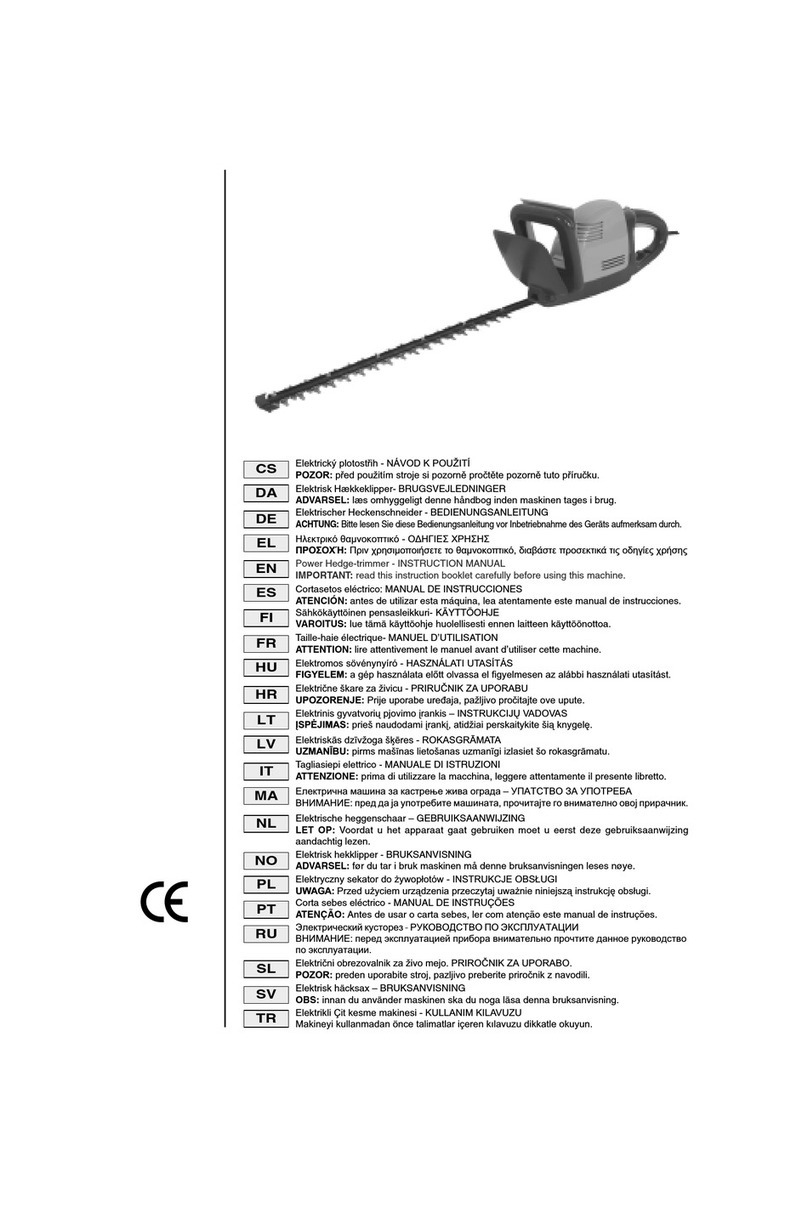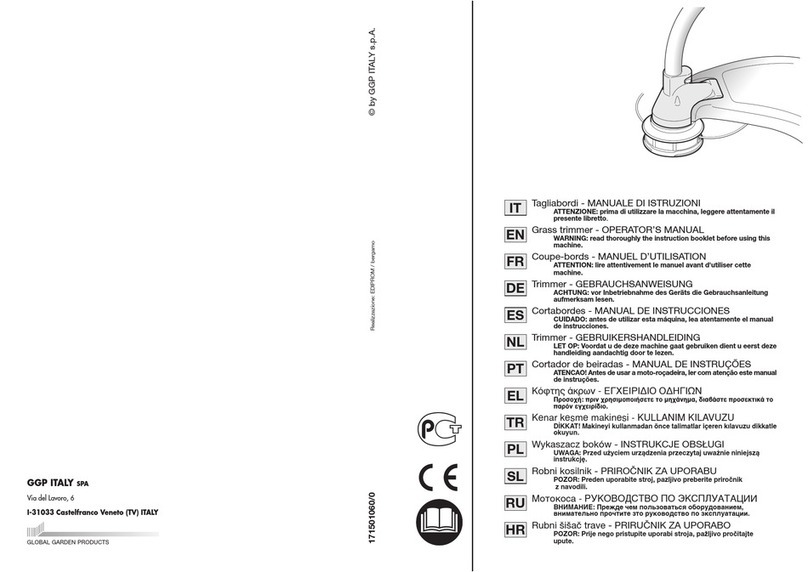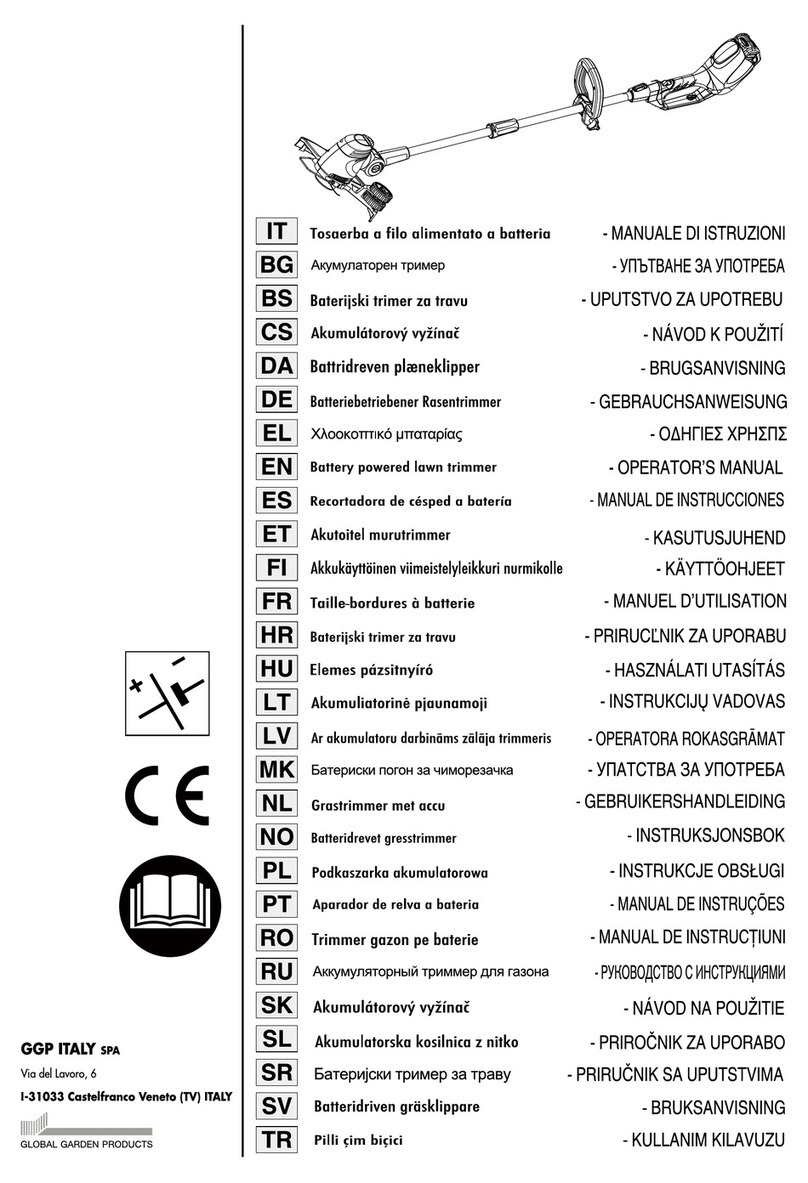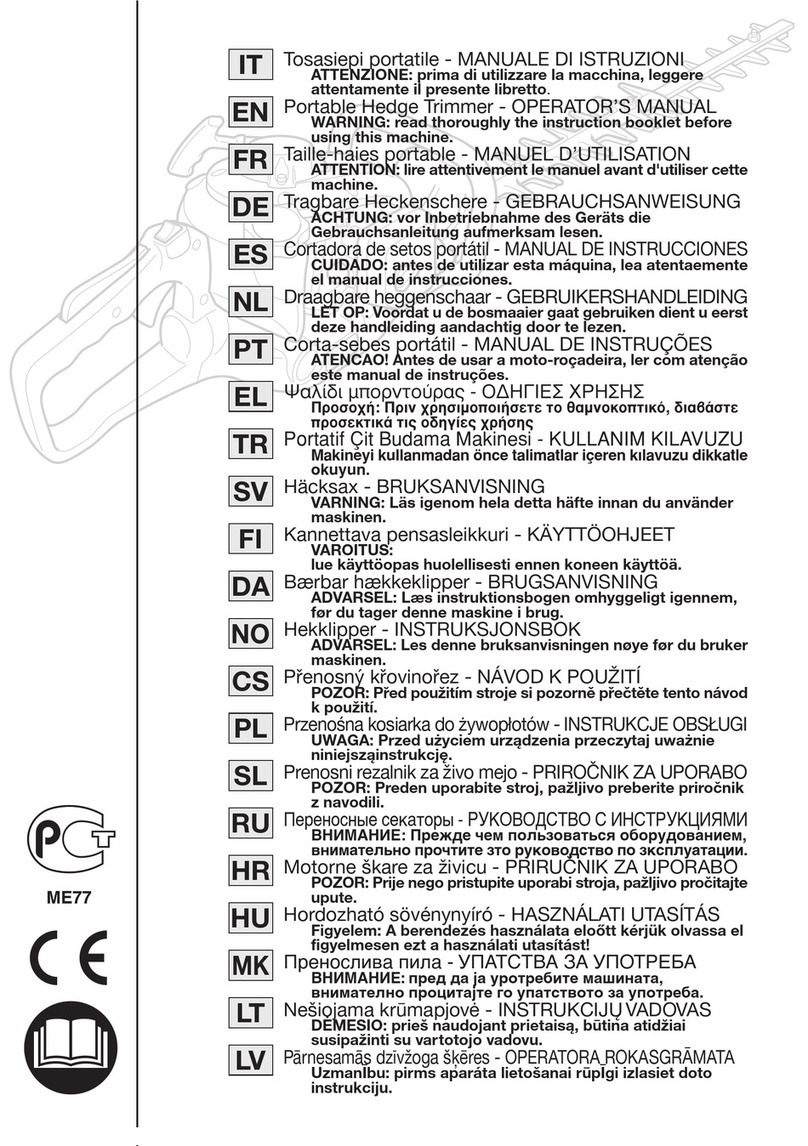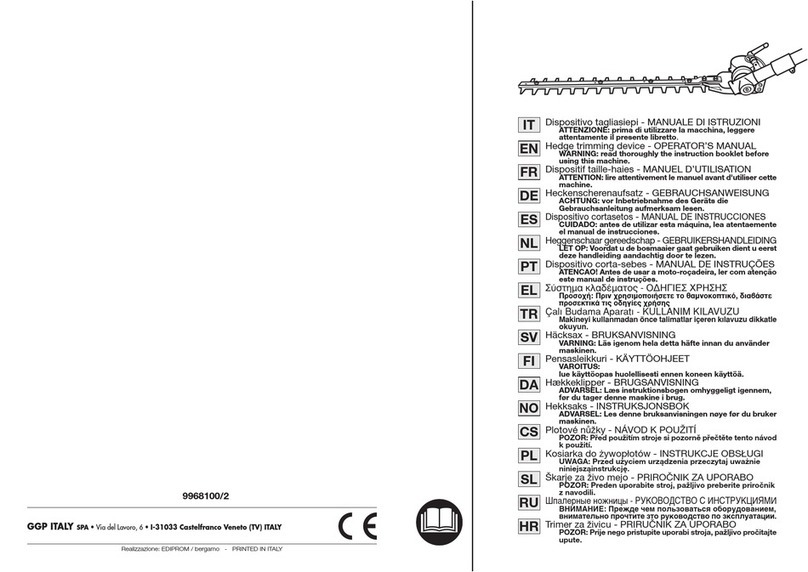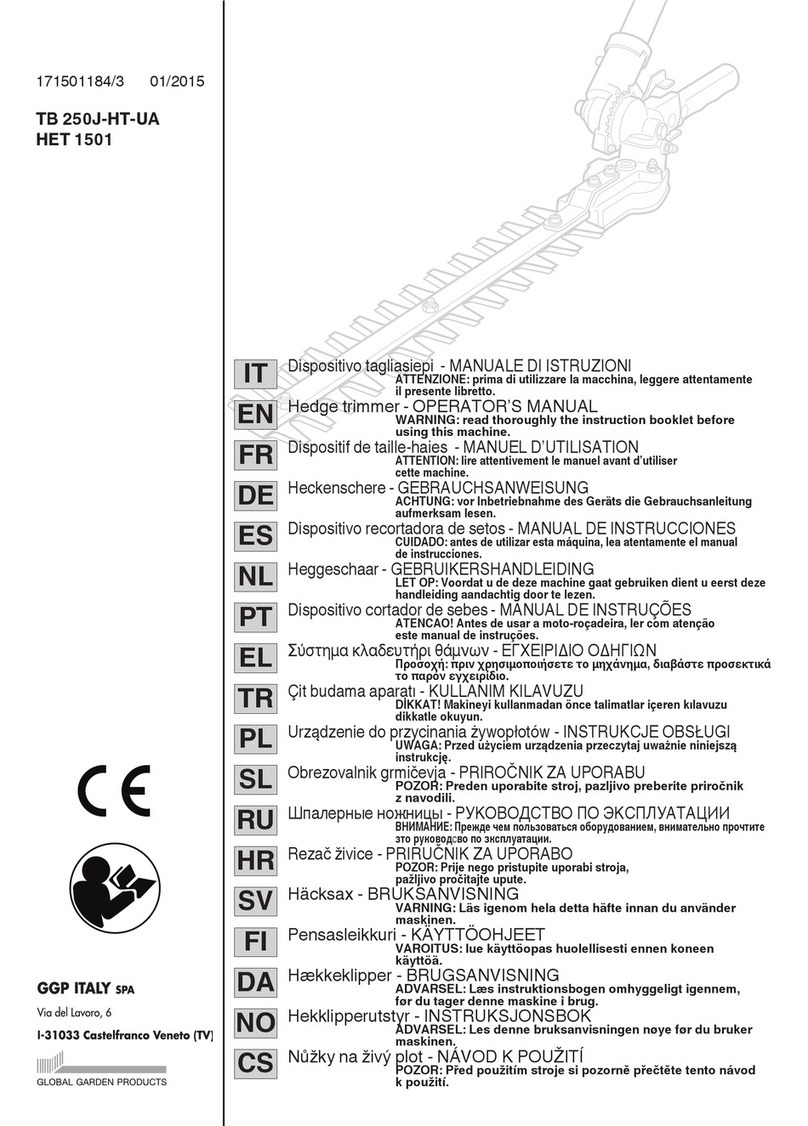22 SAFETY REQUIREMENTS
EN
A) TRAINING
1) Read the instructions carefully. Become
acquainted with the controls and the proper use
of the machine. Learn how to stop the engine
quickly.
2) Only use the machine for its intended use, that
is “the cutting and trimming of hedges, con-
sisting in plants with small sized branches”.
Any other use may be dangerous and severly
damage the machine.
3) Never allow children or persons unfamiliar
with these instructions to use the machine. Local
regulations may restrict the age of the operator.
4) The machine must never be used by more
than one person.
5) Never use the machine :
–when people, especially children or pets are in
the vicinity;
–if the user is tired or unwell, or has taken med-
icine, drugs, alcohol or any substances which
may slow his reflexes and compromise his
judgement;
–if the user is not capable of holding the
machine firmly with two hands and/or of
remaining standing on the ground whilst work-
ing.
6) Remember that the operator or user is respon-
sible for accidents or hazards occurring to other
people or their property.
B) PREPARATION
1) Always wear adequate clothing when using
the machine which do not hamper movements in
any manner.
–Always wear slim-fitting protective clothing, fit-
ted with shear-proof protection devices.
–Always wear protective gloves and eye-gog-
gles and safety anti-shear boots with non-slip
soles.
–Always wear ear and hearing protection
devices.
–Never wear scarves, shirts, necklaces, or any
hanging or flapping accessory that could catch
in the machine or in any objects or materials in
the work area.
–Tie your hair back if it is long.
2) WARNING: DANGER! Fuel is highly flamma-
ble:
–keep the fuel in containers which have been
specifically manufactured and homologated
for such use;
–never smoke when handling fuel;
–slowly open the fuel tank to allow the pressure
inside to decrease gradually;
–top up the tank with fuel in the open air, using
a tunnel;
–add fuel before starting the engine. Never
remove the fuel tank cap or add fuel while the
engine is running or when the engine is hot;
–if you have split some fuel, do not attempt to
start the engine but move the machine away
from the area of spillage and avoid creating
any source of ignition until the fuel has evapo-
rated and fuel vapours have dissipated;
–immediately clean up all traces of fuel spilt on
the machine or on the ground;
–never start the machine in the same place you
refilled it with fuel;
–make sure your clothing does not come into
contact with the fuel, on the contrary, change
your clothes before starting the engine;
–always put the tank and fuel container caps
back on and tighten well.
4) Replace faulty or damaged silencers.
5) Before using the machine, check its general
condition and in particular:
–the accelerator lever and the safety lever must
move freely, they must not need forcing and
should return automatically and rapidly back to
the neutral position;
–the accelerator lever must remain locked until
the safety lever is pressed;
–the engine stop switch must easily move from
one position to the other;
–the electric cables and in particular the spark
plug cable must be in perfect condition to
avoid the generation of any sparks and the cap
must be correctly fitted on the spark plug;
–the machine handgrips and protection devices
must be clean and dry and well fastened to the
machine;
–the blades must never be damaged or in poor
condition;
6) Before starting your work, make sure that all
the protection devices are correctly fitted.
C) OPERATION
1) Do not operate the engine in a confined space
where dangerous carbon monoxide fumes can
collect.
2) Work only in daylight or good artificial light.
3) Take on a firm and well-balanced position:
–where possible avoid working on wet slippy
ground or in any case on uneven or ripid
ground which does not guarantee stability for
the operator;
–avoid using unstable ladders or platforms;
–never run, but walk carefully paying attention
to the lay of the land and any eventual obsta-
cles.
3. SAFETY REQUIREMENTS
